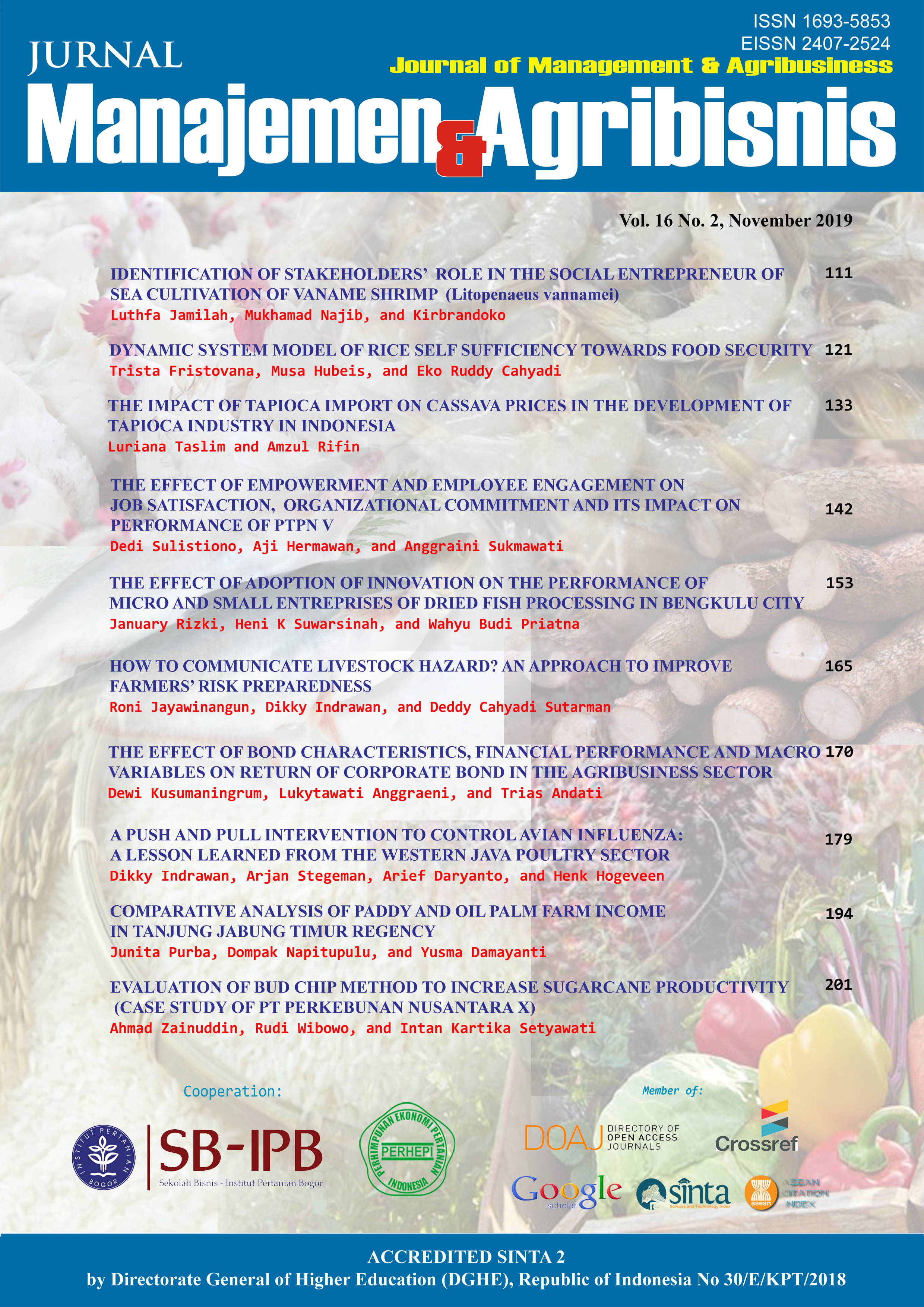HOW TO COMMUNICATE LIVESTOCK HAZARD? AN APPROACH TO IMPROVE FARMERS’ RISK PREPAREDNESS
Abstract
Poultry industry is faced with a relatively high risk especially for small scale poultry farmers. Therefore, preparedness is needed to deal with risks. Communication in poultry is s essential. Its shown by one of the strategies of national preparedness for facing influenza pandemic, namely communication, information, and education (risk communication). Communication can improve the level of knowledge of farmers. The perceived needs of farmers that emerged include knowledge for a broader implementation of essential biosecurity. This paper aims to find out the standard form of small scale farmers communication with stakeholder and the impact of communication to improve farmers' risk preparedness. The selection of respondents used convineince sampling techniques to 33 farmers. Data analysis used descriptive analysis to found preparedness and communication that is done to reduce hazards. This study found that access communication farmers are Technical Support and Nucleus with two communication approaches, such as technical guidance and personal explanation. The contents of the communication consist of poultry health management, productivity, medicine, biosecurity, cleanliness the cage, and good farming practice. In general, small-scale farmers' preparedness activities in the Bogor district are limited to cleaning the cage regularly and cleaning cage after harvesting. Farmer with more communication activities has a positive impact on preparedness to face risks, especially related to restricting cage access, awareness of cage hygiene, and vaccination.
Keywords: preparedness, hazard, livestock, communication
Authors
Authors who publish with this journal agree to the following terms:
- Authors retain copyright and grant the journal right of first publication with the work simultaneously licensed under a Creative Commons Attribution License that allows others to share the work with an acknowledgement of the work's authorship and initial publication in this journal.
- Authors are able to enter into separate, additional contractual arrangements for the non-exclusive distribution of the journal's published version of the work (e.g., post it to an institutional repository or publish it in a book), with an acknowledgement of its initial publication in this journal.
- Authors are permitted and encouraged to post their work online (e.g., in institutional repositories or on their website) prior to and during the submission process, as it can lead to productive exchanges, as well as earlier and greater citation of published work (See The Effect of Open Access).

